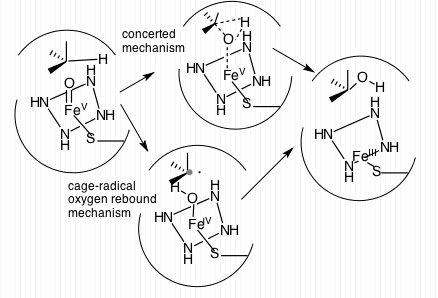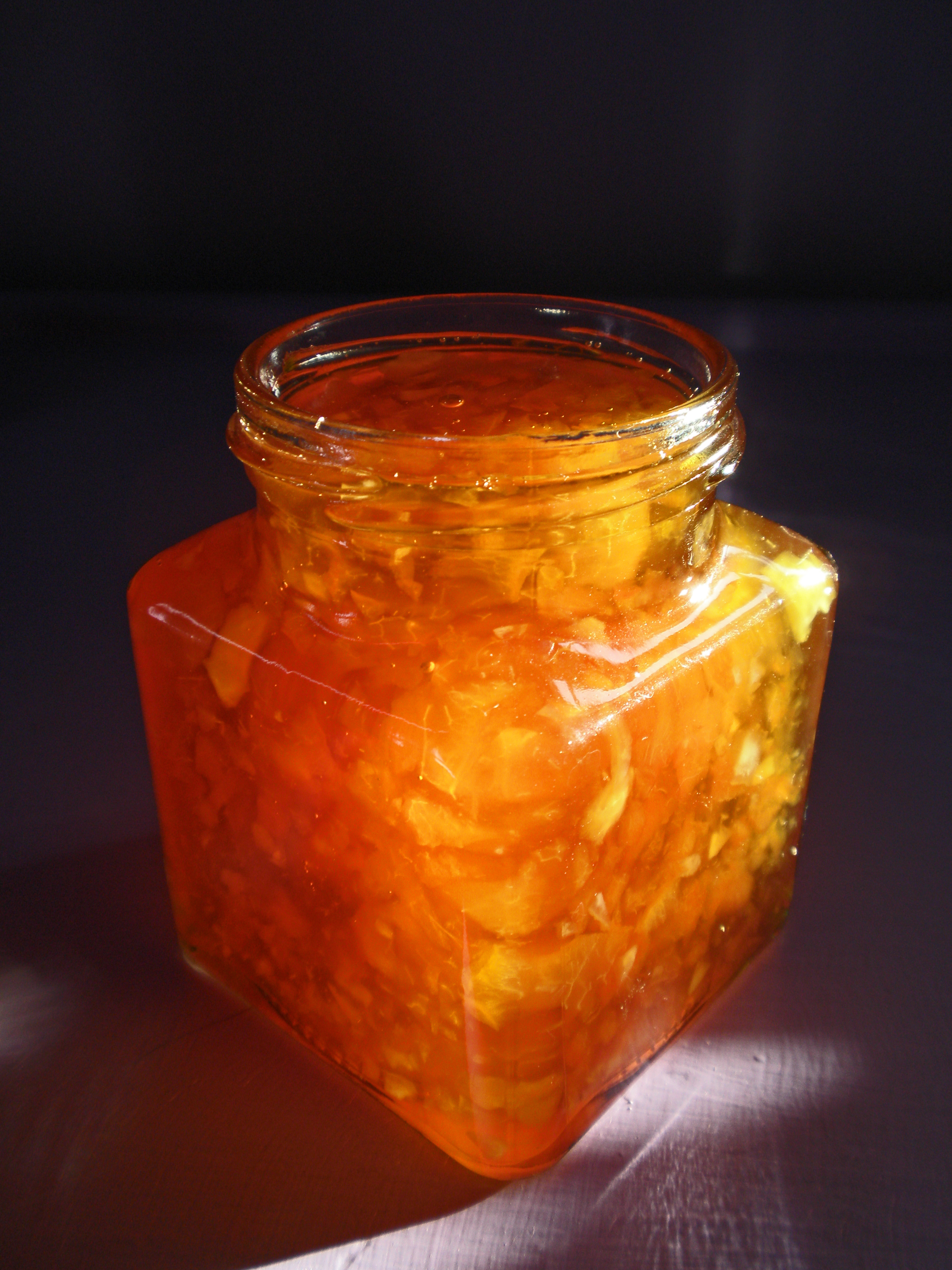|
Naringin
Naringin is a flavanone-7-''O''-glycoside between the flavanone naringenin and the disaccharide neohesperidose. The flavonoid naringin occurs naturally in citrus fruits, especially in grapefruit, where naringin is responsible for the fruit's bitter taste. In commercial grapefruit juice production, the enzyme naringinase can be used to remove the bitterness created by naringin. In humans naringin is metabolized to the aglycone naringenin (not bitter) by naringinase present in the gut. Structure Naringin belongs to the flavonoid family. Flavonoids consist of 15 carbon atoms in 3 rings, 2 of which must be benzene rings connected by a 3 carbon chain. Naringin contains the basic flavonoid structure along with one rhamnose and one glucose unit attached to its aglycone portion, called naringenin, at the 7-carbon position. The steric hindrance provided by the two sugar units makes naringin less potent than its aglycone counterpart, naringenin. Metabolism In humans, naringinase is f ... [...More Info...] [...Related Items...] OR: [Wikipedia] [Google] [Baidu] |
Naringinase
Naringinase is a debittering enzyme that is used in the commercial production of citrus juices. It breaks down the compound naringin that gives citrus juices its bitter taste. It is a multienzyme complex which possesses alpha-L-rhamnosidase and beta glucosidase active centers. The E.C. No.() of the naringinase and rhamnosidase are the same. First rhamnosidase breaks naringin into prunin and rhamnose. Lastly glucosidase breaks prunin into glucose and naringenin, a flavorless flavanone also found in various citrus. Ram gene is a rare gene; it is found in very few microorganisms, like some ''Bacillus'' species. It is mainly present in the genus ''Aspergillus ' () is a genus consisting of several hundred mold species found in various climates worldwide. ''Aspergillus'' was first catalogued in 1729 by the Italian priest and biologist Pier Antonio Micheli. Viewing the fungi under a microscope, Miche ...'', but production of naringinase from fungus is a difficult task as the growth ra ... [...More Info...] [...Related Items...] OR: [Wikipedia] [Google] [Baidu] |
Naringinase
Naringinase is a debittering enzyme that is used in the commercial production of citrus juices. It breaks down the compound naringin that gives citrus juices its bitter taste. It is a multienzyme complex which possesses alpha-L-rhamnosidase and beta glucosidase active centers. The E.C. No.() of the naringinase and rhamnosidase are the same. First rhamnosidase breaks naringin into prunin and rhamnose. Lastly glucosidase breaks prunin into glucose and naringenin, a flavorless flavanone also found in various citrus. Ram gene is a rare gene; it is found in very few microorganisms, like some ''Bacillus'' species. It is mainly present in the genus ''Aspergillus ' () is a genus consisting of several hundred mold species found in various climates worldwide. ''Aspergillus'' was first catalogued in 1729 by the Italian priest and biologist Pier Antonio Micheli. Viewing the fungi under a microscope, Miche ...'', but production of naringinase from fungus is a difficult task as the growth ra ... [...More Info...] [...Related Items...] OR: [Wikipedia] [Google] [Baidu] |
Naringenin
Naringenin is a flavorless, colorless flavanone, a type of flavonoid. It is the predominant flavanone in grapefruit, and is found in a variety of fruits and herbs. Structure Naringenin has the skeleton structure of a flavanone with three hydroxy groups at the 4', 5, and 7 carbons. It may be found both in the aglycol form, naringenin, or in its glycosidic form, naringin, which has the addition of the disaccharide neohesperidose attached via a glycosidic linkage at carbon 7. Like the majority of flavanones, naringenin has a single chiral center at carbon 2, although the optical purity is variable. Racemization of S(-)-naringenin has been shown to occur fairly quickly. Sources and bioavailability Naringenin and its glycoside has been found in a variety of herbs and fruits, including grapefruit, bergamot, sour orange, tart cherries, tomatoes, cocoa, Greek oregano, water mint, as well as in beans. Ratios of naringenin to naringin vary among sources, as do enantiomeric rati ... [...More Info...] [...Related Items...] OR: [Wikipedia] [Google] [Baidu] |
Prunin
Prunin is a flavanone glycoside found in immature citrus fruits and in tomatoes.Improved characterization of tomato polyphenols using liquid chromatography/electrospray ionization linear ion trap quadrupole Orbitrap mass spectrometry and liquid hromatography/electrospray ionization tandem mass spectrometry. Anna Vallverdu´-Queralt, Olga Jauregui, Alexander Medina-Remon, Cristina Andres-Lacueva and Rosa M. Lamuela-Raventos, Rapid Commun. Mass Spectrom., 2010, volume 24, pages 2986–2992, Its aglycone form is called naringenin. Metabolism Alpha-L-rhamnosidase breaks naringin into prunin and rhamnose. Glucosidase breaks prunin into glucose and naringenin Naringenin is a flavorless, colorless flavanone, a type of flavonoid. It is the predominant flavanone in grapefruit, and is found in a variety of fruits and herbs. Structure Naringenin has the skeleton structure of a flavanone with three hyd .... References Bibliography * External links * Flavanone glycosides F ... [...More Info...] [...Related Items...] OR: [Wikipedia] [Google] [Baidu] |
CYP1A2
Cytochrome P450 1A2 (abbreviated CYP1A2), a member of the cytochrome P450 mixed-function oxidase system, is involved in the metabolism of xenobiotics in the human body. In humans, the CYP1A2 enzyme is encoded by the ''CYP1A2'' gene. Function CYP1A2 is a member of the cytochrome P450 superfamily of enzymes. The cytochrome P450 proteins are monooxygenases which catalyze many reactions involved in drug metabolism and synthesis of cholesterol, steroids and other lipids. CYP1A2 localizes to the endoplasmic reticulum and its expression is induced by some polycyclic aromatic hydrocarbons (PAHs), some of which are found in cigarette smoke. The enzyme's endogenous substrate is unknown; however, it is able to metabolize some PAHs to carcinogenic intermediates. Other xenobiotic substrates for this enzyme include caffeine, aflatoxin B1, and paracetamol (acetaminophen). The transcript from this gene contains four Alu sequences flanked by direct repeats in the 3' untranslated region. CYP1A2 ... [...More Info...] [...Related Items...] OR: [Wikipedia] [Google] [Baidu] |
LD50
In toxicology, the median lethal dose, LD50 (abbreviation for "lethal dose, 50%"), LC50 (lethal concentration, 50%) or LCt50 is a toxic unit that measures the lethal dose of a toxin, radiation, or pathogen. The value of LD50 for a substance is the dose required to kill half the members of a tested population after a specified test duration. LD50 figures are frequently used as a general indicator of a substance's acute toxicity. A lower LD50 is indicative of increased toxicity. The test was created by J.W. Trevan in 1927. The term semilethal dose is occasionally used in the same sense, in particular with translations of foreign language text, but can also refer to a sublethal dose. LD50 is usually determined by tests on animals such as laboratory mice. In 2011, the U.S. Food and Drug Administration approved alternative methods to LD50 for testing the cosmetic drug Botox without animal tests. Conventions The LD50 is usually expressed as the mass of substance administered per unit ... [...More Info...] [...Related Items...] OR: [Wikipedia] [Google] [Baidu] |
Enzyme Inhibitor
An enzyme inhibitor is a molecule that binds to an enzyme and blocks its activity. Enzymes are proteins that speed up chemical reactions necessary for life, in which substrate molecules are converted into products. An enzyme facilitates a specific chemical reaction by binding the substrate to its active site, a specialized area on the enzyme that accelerates the most difficult step of the reaction. An enzyme inhibitor stops ("inhibits") this process, either by binding to the enzyme's active site (thus preventing the substrate itself from binding) or by binding to another site on the enzyme such that the enzyme's catalysis of the reaction is blocked. Enzyme inhibitors may bind reversibly or irreversibly. Irreversible inhibitors form a chemical bond with the enzyme such that the enzyme is inhibited until the chemical bond is broken. By contrast, reversible inhibitors bind non-covalently and may spontaneously leave the enzyme, allowing the enzyme to resume its function. Reve ... [...More Info...] [...Related Items...] OR: [Wikipedia] [Google] [Baidu] |
Cytochrome P450
Cytochromes P450 (CYPs) are a Protein superfamily, superfamily of enzymes containing heme as a cofactor (biochemistry), cofactor that functions as monooxygenases. In mammals, these proteins oxidize steroids, fatty acids, and xenobiotics, and are important for the clearance (pharmacology), clearance of various compounds, as well as for hormone synthesis and breakdown. In 1963, Ronald W. Estabrook, Estabrook, David Y. Cooper, Cooper, and Otto Rosenthal, Rosenthal described the role of CYP as a catalyst in steroid hormone synthesis and drug metabolism. In plants, these proteins are important for the biosynthesis of secondary metabolite, defensive compounds, fatty acids, and hormones. CYP enzymes have been identified in all kingdom (biology), kingdoms of life: animals, plants, fungus, fungi, protists, bacteria, and archaea, as well as in viruses. However, they are not omnipresent; for example, they have not been found in ''Escherichia coli''. , more than 300,000 distinct CYP proteins ... [...More Info...] [...Related Items...] OR: [Wikipedia] [Google] [Baidu] |
Enzyme
Enzymes () are proteins that act as biological catalysts by accelerating chemical reactions. The molecules upon which enzymes may act are called substrates, and the enzyme converts the substrates into different molecules known as products. Almost all metabolic processes in the cell need enzyme catalysis in order to occur at rates fast enough to sustain life. Metabolic pathways depend upon enzymes to catalyze individual steps. The study of enzymes is called ''enzymology'' and the field of pseudoenzyme analysis recognizes that during evolution, some enzymes have lost the ability to carry out biological catalysis, which is often reflected in their amino acid sequences and unusual 'pseudocatalytic' properties. Enzymes are known to catalyze more than 5,000 biochemical reaction types. Other biocatalysts are catalytic RNA molecules, called ribozymes. Enzymes' specificity comes from their unique three-dimensional structures. Like all catalysts, enzymes increase the reaction ra ... [...More Info...] [...Related Items...] OR: [Wikipedia] [Google] [Baidu] |
CYP3A4
Cytochrome P450 3A4 (abbreviated CYP3A4) () is an important enzyme in the body, mainly found in the liver and in the intestine. It oxidizes small foreign organic molecules (xenobiotics), such as toxins or drugs, so that they can be removed from the body. It is highly homologous to CYP3A5, another important CYP3A enzyme. While many drugs are deactivated by CYP3A4, there are also some drugs which are ''activated'' by the enzyme. Some substances, such as some drugs and furanocoumarins present in grapefruit juice, interfere with the action of CYP3A4. These substances will therefore either amplify or weaken the action of those drugs that are modified by CYP3A4. CYP3A4 is a member of the cytochrome P450 family of oxidizing enzymes. Several other members of this family are also involved in drug metabolism, but CYP3A4 is the most common and the most versatile one. Like all members of this family, it is a hemoprotein, i.e. a protein containing a heme group with an iron atom. In humans, ... [...More Info...] [...Related Items...] OR: [Wikipedia] [Google] [Baidu] |
Rutinose
Rutinose is the disaccharide also known as 6-''O''-α-L-rhamnose, rhamnosyl-D-glucose (C12H22O10) that is present in some flavonoid glycosides. It is prepared from rutin by hydrolysis with the enzyme rhamnodiastase. References * Disaccharides Deoxy sugars {{organic-compound-stub ... [...More Info...] [...Related Items...] OR: [Wikipedia] [Google] [Baidu] |
Bitter Orange
Bitter orange, Seville orange, bigarade orange, or marmalade orange is the citrus tree ''Citrus'' × ''aurantium'' and its fruit. It is native to Southeast Asia and has been spread by humans to many parts of the world. It is probably a cross between the pomelo, ''Citrus maxima'', and the mandarin orange, ''Citrus reticulata''. History Wild trees are found near small streams in generally secluded and wooded parts of Florida and the Bahamas after it was introduced to the area from Spain, where it had been introduced and cultivated heavily beginning in the 10th century by the Moors. Identification Citrus × aurantium can be identified through its orange fruit with a distinctly bitter or sour taste. The tree has alternate simple leaves and thorns on its petiole. Usage Many varieties of bitter orange are used for their essential oil, and are found in perfume, used as a flavoring or as a solvent, and also for consumption. The Seville orange variety is used in the production of marma ... [...More Info...] [...Related Items...] OR: [Wikipedia] [Google] [Baidu] |




